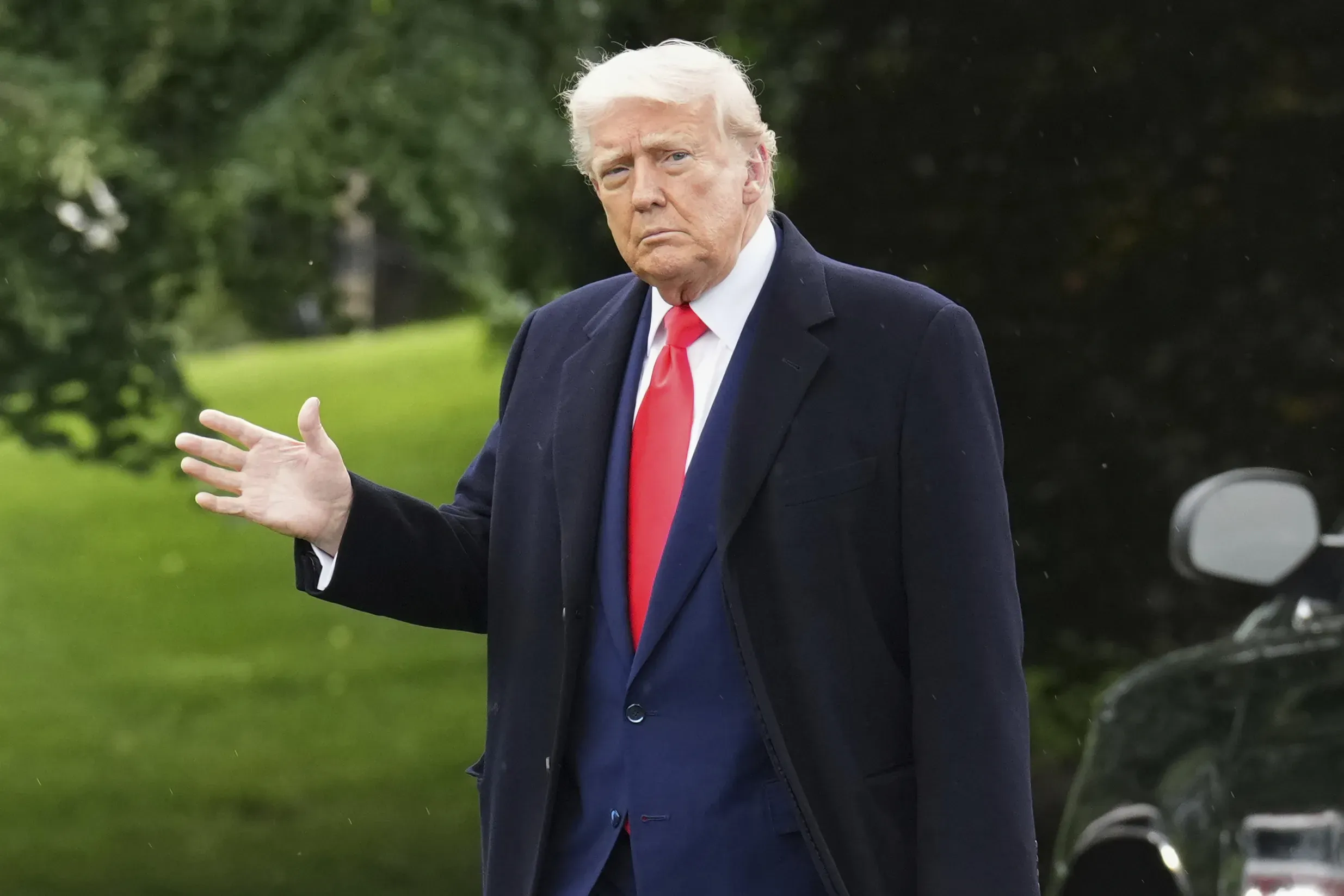The Trump Apple Tariff is shaping up to be a pivotal moment in the ongoing dialogue around U.S. trade and manufacturing policies. President Donald Trump has recently emphasized that if Apple does not relocate its iPhone manufacturing back to the United States, it will incur a steep 25% tariff on its devices sold domestically. This bold claim, shared through social media, highlights the administration’s commitment to reshaping the landscape of Apple production and its impact on consumers who may face higher prices as a result. With Apple’s dominant role in smartphone technology, the implications of these tariffs could resonate far beyond the company, influencing iPhone manufacturing and potentially raising costs for consumers nationwide. Additionally, the Trump trade policy raises questions about the future of U.S. tariffs and their long-term effects on innovation and the supply chain within the tech industry.
In the realm of U.S. trade discussions, the potential for a significant tariff imposed on Apple products by the Trump administration has been the center of attention. With the ongoing pressure for domestic production, President Trump has conveyed that he expects major corporations like Apple to prioritize U.S. manufacturing over overseas production facilities. The implications of such tariffs could lead to drastic shifts in the marketplace, affecting not only the iPhone manufacturing cycle but also how consumers perceive the value and pricing of Apple products. Furthermore, this policy highlights a greater scrutiny of tech giants’ production choices, echoing broader concerns about supply chain vulnerabilities and their impact on U.S. consumers. As discussions continue, the consumer impact of these tariffs remains a focal point, with many experts speculating on how these changes will alter the landscape of American trade and technology.
The Impact of Trump Apple Tariff on iPhone Prices
The warning from President Trump about imposing a 25% tariff on iPhones produced outside the U.S. has raised significant concerns regarding the future pricing of Apple’s flagship device. A notable financial analyst, Dan Ives, estimates that if Apple were compelled to shift its iPhone manufacturing to the U.S., consumers could see retail prices soar to as high as $3,500. This dramatic increase in pricing could deter many consumers from purchasing the latest iPhone models, leading to decreased sales and potentially impacting Apple’s revenue.
Moreover, the Trump Apple Tariff scenario calls into question how vital competitive pricing is in the smartphone market. With competitors like Samsung and emerging brands rolling out affordable devices, the steep price hike could push consumers towards alternative options. This shift could mean significant losses for Apple if they cannot maintain an edge through innovative features, user experience, or consumer loyalty while also managing the cost implications of domestic manufacturing.
Understanding the Consumer Impact of U.S. Tariffs
Tariffs imposed by the U.S. on imported goods, particularly those affecting electronics like iPhones, have far-reaching implications for American consumers. As retailers adjust their pricing strategies in response to these tariffs, the burden often falls on consumers who may ultimately face increased prices on everyday products. The Chief Financial Officer of Walmart has already indicated that expectations of price hikes are imminent, citing that the high tariffs are pushing prices beyond what retailers can absorb without passing costs on to consumers.
This consumer impact is critical, as it highlights the chain reaction that tariff policies can incite within the economy. When prices for essential electronics like smartphones rise, consumers have to reconsider their purchasing decisions, leading to a potential decline in consumer spending, which could adversely affect economic growth. The ripple effects could also lead to greater scrutiny over trade policies, as consumers begin to feel the pinch of elevated costs in their daily lives due to these tariffs.
The Future of iPhone Manufacturing amidst Trump’s Trade Policy
The future of iPhone manufacturing in the wake of Trump’s trade policy is uncertain, particularly as Apple is actively exploring options to relocate its production facilities. The company’s intention to build factories in India signifies a shift towards internationalizing its manufacturing base; however, this has met with strong backlash from the U.S. government. Trump’s insistence on a domestic manufacturing model has introduced pressure on Tim Cook, and the resulting tariff threat serves as a backdrop to a larger conversation about global supply chains in tech production.
While Apple has made substantial commitments to invest in U.S. manufacturing, such changes take time. Analysts cite that around 90% of iPhone production currently occurs in China, making it unlikely that a quick transition to U.S.-based assembly is feasible. Consequently, as tariffs loom, many speculate whether Apple’s plans will be adjusted in light of pressure to manufacture locally, thereby reshaping the landscape of iPhone production in the coming years.
Exploring Alternatives: Apple’s Shift to India and Vietnam
While Trump has indicated a strong preference for U.S. manufacturing, Apple’s ongoing expansion in India and Vietnam reveals a strategic move to diversify its production lines. With significant investments such as Foxconn’s $1.5 billion component plant in India, Apple is clearly positioning itself to mitigate risks associated with tariffs and trade tensions. This international footprint may buffer the company from the high costs associated with potential tariffs while also tapping into the growing market demand in Asia.
In addition, Apple’s transition to alternative manufacturing countries like Vietnam also showcases the company’s adaptability in the face of shifting regulatory landscapes. While some experts argue that producing more devices in the U.S. could ultimately secure the supply chain, the reality is that the logistical and economic incentives of manufacturing in countries with lower labor costs currently outweigh U.S.-based operations. Nonetheless, as discussions around trade policies evolve, Apple may have to carefully navigate how much of its production moves overseas versus returns to the U.S.
Tariff Strategies and the Future of Apple Production
Tariff strategies form the crux of President Trump’s negotiation tactics, especially as they pertain to major corporations like Apple. By leveraging the threat of high tariffs, Trump attempts to influence corporate decisions around domestic production, pushing companies to reassess their global supply chain strategies. Apple’s dilemma reflects the intersection of corporate interests and political policy, ultimately affecting how and where products are manufactured.
This tug-of-war between trade policies and corporate governance indicates the complexities companies face in balancing cost-efficiency with consumer demands for American-made products. While tariffs may incentivize companies like Apple to shift production domestically to avoid costs, the immediate implementation of such strategies may not be practical without significant investment and planning.
How Tariffs Could Reshape Global Supply Chains
The potential imposition of tariffs, such as the Trump Apple Tariff, has broader implications for global supply chains, particularly in technology and electronics manufacturing. As companies re-evaluate where to manufacture their products, the tariffs compel manufacturers to explore alternative options, pushing them to optimize supply chains to mitigate risks and costs. For instance, firms that rely heavily on components sourced from various countries may find themselves needing to localize production to comply with U.S. regulations.
This reshaping of supply chains ultimately raises questions about the sustainability of global trade practices. Technology companies may need to adapt by diversifying their production to maintain competitiveness and avoid incurring excessive costs from tariffs. Such realignments could also spur economic growth in new regions, as companies seek out the best locations to balance cost with compliance.
The Relationship Between U.S. Tariffs and Consumer Electronics Pricing
The relationship between U.S. tariffs and the pricing of consumer electronics has become increasingly significant as trade disputes evolve. As noted in various analyses, tariffs applied to products like iPhones are likely to be transferred directly to consumers, creating an immediate effect on retail pricing. This pricing impact rolls back the benefits of competitive pricing that consumers have enjoyed, making formerly affordable products out of reach for many.
Retailers and manufacturers now face an uphill battle to absorb the increased costs while trying to maintain profit margins. As prices rise, consumer sentiment may shift, leading to reduced spending on technology. This scenario underlines the need for careful consideration of trade policies, as aggressive tariff strategies can prick the very fabric of market competitiveness and consumer accessibility.
Consumer Reactions to Potential Price Hikes on Apple Products
Consumers are bracing for the impact of potential price hikes resulting from increased tariffs on Apple products. As retailers have already expressed concerns about raising prices, many consumers find themselves questioning their budgets and spending plans. Reports suggest that dissatisfaction could grow among consumers who feel that they may be forced to choose between less desirable tech alternatives or delaying their purchases entirely due to elevated costs.
Engaging consumers in this dialogue is crucial for companies like Apple and retailers, as understanding customer sentiment may inform future business strategies. If consumers perceive value in the more premium offerings from Apple, they may be willing to absorb the higher prices. However, if the price increases are too steep, it could irrevocably alter purchasing habits and force Apple to reconsider its pricing strategies.
The Technical Challenges of Shifting Apple’s Manufacturing Base
Transitioning Apple’s manufacturing from overseas to the U.S. is not simply a matter of relocating factories; it entails overcoming numerous technical challenges. Apple must delve into securing a skilled workforce, establishing new supply chains, and managing the logistics of domestic production. Given that an estimated 90% of iPhones are currently assembled in China, the logistical complexities of establishing similar operations in the U.S. cannot be understated.
Moreover, as Trump advocates for a tariff-incentivized domestic production model, Apple must weigh the costs and benefits of such a shift. The high capital investment required, coupled with the potential uncertainty surrounding regulatory environments, could pose significant obstacles. As a result, Apple must strategically plan any transition while maintaining their existing global production capabilities.
Frequently Asked Questions
What is the Trump Apple Tariff and how does it affect iPhone manufacturing?
The Trump Apple Tariff refers to President Trump’s threat of imposing a 25% tariff on iPhones if they are not manufactured in the United States. This policy aims to encourage Apple to shift iPhone production back to the U.S., potentially impacting the global supply chain and increasing retail prices for consumers.
How might the Trump Apple Tariff impact consumer prices for iPhones?
Under the Trump Apple Tariff, if Apple relocates iPhone production to the U.S., analysts predict significant price increases for consumers. For instance, Dan Ives from Wedbush Securities suggested that iPhone prices could skyrocket to $3,500, revealing a substantial consumer impact due to higher production costs.
What are the implications of U.S. tariffs on Apple’s production strategy?
U.S. tariffs, particularly the Trump Apple Tariff, pressure Apple to reconsider its production strategy. The urgency for U.S.-based manufacturing could lead Apple to adjust its investments, particularly moving away from extensive manufacturing in countries like India and China to mitigate tariff impacts.
How do Trump’s tariffs relate to Apple’s component manufacturing and supply chain?
Trump’s tariffs directly affect Apple’s component manufacturing, specifically semiconductors sourced overseas. The U.S. Treasury Secretary emphasized the need for a secure domestic semiconductor supply chain to mitigate vulnerabilities highlighted by the Trump Apple Tariff.
What was President Trump’s expectation from Apple regarding U.S. manufacturing?
President Trump expects Apple to manufacture iPhones in the U.S., stating that failure to comply would result in significant tariffs. This expectation aligns with his broader trade policy aimed at boosting American manufacturing and reducing dependencies on international production.
Can we expect changes in Apple’s manufacturing locations due to the Trump Apple Tariff?
Yes, the Trump Apple Tariff may prompt changes in Apple’s manufacturing locations, potentially increasing production in the U.S. However, given the complexity of Apple’s supply chain, significant transitions may take time, as they currently assemble a large majority of iPhones in China.
What are consumers likely to experience with the Trump Apple Tariff in place?
Consumers are likely to face increased prices for Apple products, notably iPhones, due to the Trump Apple Tariff and its effects on production costs. Retailers like Walmart have already indicated that existing tariffs are leading to higher consumer prices for various goods.
How does Trump’s trade policy affect Apple’s operations in India and China?
Trump’s trade policy, particularly the Trump Apple Tariff, creates uncertainty for Apple’s operations in India and China. As Apple seeks to increase manufacturing in India, they must balance the risks of tariffs when exporting to the U.S., influencing their overall production strategy.
What statements did Trump make regarding foreign companies and tariffs?
Trump stated that the Trump Apple Tariff would not only apply to Apple but also to other foreign companies like Samsung, asserting that fairness in trade requires these companies to manufacture within the U.S. to avoid tariffs.
How is the retail industry reacting to Trump’s tariff threats, specifically concerning Apple products?
The retail industry is reacting cautiously to Trump’s tariff threats, with executives like Walmart’s CFO indicating potential price increases for consumers due to heightened costs from the Trump Apple Tariff. There is concern about how these tariffs can impact overall pricing strategies across the retail sector.
| Key Point | Details |
|---|---|
| Trump’s Tariff Threat | Trump warned Tim Cook that iPhones not made in the U.S. will face a 25% tariff. |
| Broader Implications | Tariffs could apply to other companies like Samsung if they do not manufacture in the U.S. |
| Economic Impact | Estimations indicate a potential rise in iPhone prices to $3,500 if produced in the U.S. |
| Consumer Effects | Consumers may notice price increases on various products due to existing and new tariffs. |
| Response from Retailers | Retailers like Walmart indicate they may need to raise prices due to high tariffs. |
Summary
The Trump Apple Tariff controversy underscores a tense trade environment where President Trump has threatened Apple with heavy tariffs unless the company shifts its manufacturing back to the U.S. This move is aimed at protecting domestic jobs while aiming to bolster the semiconductor supply chain, an area critical for technology firms. However, such tariffs could substantially increase iPhone prices and ripple effects on consumer costs could lead to broader economic implications as retailers struggle to maintain low prices in light of rising operational costs. As the situation develops, both consumers and companies will feel the pressure of these tariffs.



